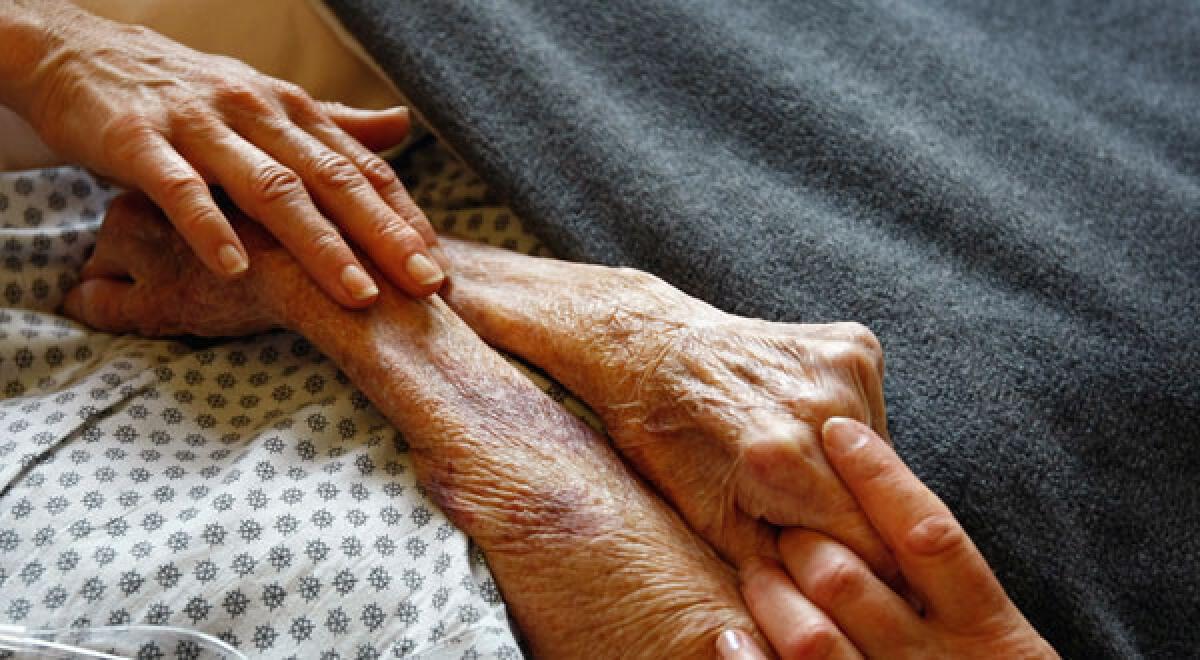Los Angeles leads nation in Medicare spending on end-of-life care

- Share via
More money was spent in the Los Angeles area on chronically ill patients in their final years than anywhere else in the United States, according to new data on Medicare patients released Wednesday.
Spending in the last two years of life was about $112,000 per patient in Los Angeles as of 2010, about 60% higher than the national average, the report by the Dartmouth Atlas Project showed.
From 2007 to 2010, Medicare spending on end-of-life care rose 15% nationwide. The jump occurred despite more patients enrolling in hospice care, fewer patients dying at the hospital and patients spending fewer days in the hospital in the last six months of life.
Lead researcher David Goodman said more hospitals are changing the way they treat dying patients by providing more palliative care and avoiding less intensive treatment. Still, more needs to be done to ensure that people get the type of care they want, he said.
Most patients want their final days to be at home, without invasive procedures that aren’t likely to increase the length or improve the quality of their lives, research shows. But that isn’t always what they get, Goodman said.
Hospitals need to “develop better ways of diagnosing patient preferences at the end of life,” he said. More palliative care at the end of life can save money, improve patients’ satisfaction and actually lengthen their lives, according to research.
There is also tremendous variation in end-of-life care across the U.S., with patients in some regions getting much more aggressive care than in other regions. That is in part because doctors and nurses often aren’t aware that they are doing anything different from their counterparts at other hospitals or in other areas.
Those differences are pronounced in California, according to an analysis by the California HealthCare Foundation. In some areas, researchers found that dying patients spent double the number of days in the hospital and triple the number of days in an intensive care unit than in other areas. The California analysis also showed that patients didn’t always receive the type of care they preferred.
In Los Angeles, the percentage of patients who died in the hospital decreased from 37% in 2007 to 34% in 2010. During that same time period, the percentage of people enrolled in hospice increased from 29% to 35%. The data are based on a healthcare market covering much of the county.
Researchers disagree as to why the Medicare expenditures in Los Angeles are so much higher than elsewhere. But patients here spent about 13 days in hospice care during their last six months of life, compared with 21 days nationwide. And they spent 14 days in hospitals, compared with 10 days nationwide. Some experts suspect that this difference may be due to more hospital beds being available and pressure to fill those beds.
“It has a lot to do with the culture of care we create in medicine,” said Steven Pantilat, director of the palliative care program at UC San Francisco Medical Center. “What we are offering and what people really want is really quite different..... If we change the culture of care, things will change.”
That culture change is beginning to occur as doctors, nurses and patients become more aware of palliative care, which aims to relieve pain and improve the quality of life for seriously ill and dying patients. More medical schools are teaching palliative care and more hospitals are hiring palliative care doctors.
The Dartmouth Atlas report showed a nationwide decrease in the number of days patients spent in the hospital in the last six months and a leveling off of the number of days in the intensive care unit.
Nevertheless, dying patients often saw an array of doctors during that time period, the study found. About 42% of patients around the nation — and 52% in Los Angeles — saw 10 or more doctors in the last six months of life.
More to Read
Sign up for Essential California
The most important California stories and recommendations in your inbox every morning.
You may occasionally receive promotional content from the Los Angeles Times.










